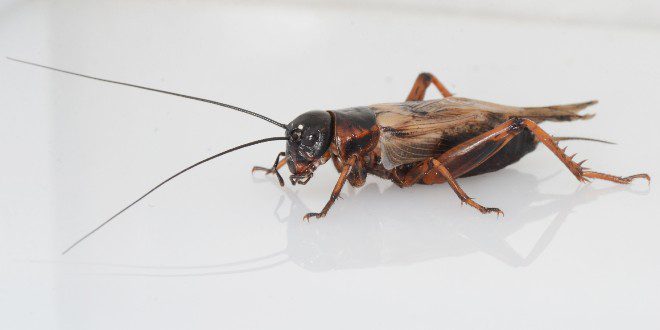No one who watched the iconic Disney film Pinocchio will forget Jiminy Cricket – the fictional insect whose appearance differed somewhat from that of actual crickets, which range from black to light brown and have long antennae and six legs. Jiminy Cricket had short antennae, a greenish-brown color and four limbs, stood on two of them and dressed in the manner of a 19th- century gentleman, wearing a blue top hat and carrying a burgundy umbrella.
Real-life crickets are insects distantly to grasshoppers. They have cylindrically-shaped bodies, round heads and long antennae. The front wings are adapted as tough and leathery, and some crickets chirp by rubbing parts of these together.
Crickets are distributed all around the world except in cold climates, with the greatest diversity being in the tropics, and they are mainly nocturnal (awake at night). They are best known for the loud, persistent, chirping song of males trying to attract females, although some species are mute.
Now, researchers at Israel’s Tel Aviv University (TAU) and Open University have discovered that light pollution makes crickets chirp during the daytime and that this may disrupt reproductive processes.
The study was led by Prof. Amir Ayali and Keren Levy of TAU’s School of Zoology and the Steinhardt Museum of Natural History and Prof. Anat Barnea of the department of natural and life sciences at the Open University. Yoav Wegrzyn at Ayali’s lab and Ronny Efronny also took part in the study. The paper was published in Proceedings of the Royal Society B under the title “Lifelong exposure to artificial light at night impacts stridulation and locomotion activity patterns in the cricket Gryllus bimaculatus” and was also mentioned in the prestigious journal Nature.
When their light-dark cycle is disrupted, crickets behave like teenagers on vacation – active or asleep according to their inner clock or without any rhythm,” the researchers said. “This disruption can impair the crickets’ reproductive process and even threaten the population’s survival.”
The joint study revealed that exposing male crickets to ALAN can impair their activity cycles. Previous studies worldwide have shown that light pollution is harmful to many species of animals and plants. The researchers call for reducing ALAN as much as possible to enable coexistence In the night environment.
“The distinction between day and night, light and darkness, is a major foundation of life on earth,” said Levy. “But humans, as creatures of the day who fear the darkness, disrupt this natural order. They produce artificial light that drives away the darkness and allows them to continue their activities at night. Today more than 80% of the world population live under light pollution, and the overall extent of ALAN rises by 5% every year.”
She added that ALAN negatively impacts the environment and affects natural behaviors that have developed over millions of years of evolution. “ALAN affects the length and quality of sleep of many animals, leads to high mortality, and changes the activity cycles of many creatures. For example, dung beetles, that navigate using the Milky Way, lose their way when light pollution increases; sea turtles hatchlings seek the brightest surface in sight – supposedly the sea, and reach the nearby promenade instead; to mention just two of many examples.”
In the current study, the researchers examined the impact of light pollution on the field cricket, a nocturnal insect whose chirping can be heard during the nights of late summer when males call for females to mate with them. “In nature, crickets exhibit a very regular cycle of activity. Chirping behavior,” explained Ayali, “occurs at sunset and during the night, ending in the morning. We exposed field crickets to different levels of lifelong ALAN and observed its impact on two fundamental behaviors: chirping and locomotion.”
The researchers monitored dozens of crickets exposed lifelong (from egg to adult stage) to four types of light conditions. They found that crickets exposed to 12 hours of light followed by 12 hours of darkness showed cyclic activity rhythms of 24h – they began to chirp when the lights went out and stopped when the lights were turned on again.
Crickets that experienced partial lighting in the dark periods lost their natural rhythms and their synchronization with their environment – 80% followed an individual inner cycle, and five percent lost all rhythm. Crickets exposed to constant light around the clock developed their own cycles (71%) or lost all rhythm (29%). The findings indicated that increase of ALAN in the laboratory induces loss of rhythmicity at both the individual and population levels.
“In fact, light pollution induced by humankind impacts the field cricket and evokes loss of synchronization within the individual, on the population level, and between the population and the environment. Our findings on ALAN-induced changes in calling song patterns may possibly impair female attraction and reproduction in this species,” concluded Levy. “Our results are in accord with many other studies demonstrating the severe impacts of low levels of ALAN on nature. We call on the public to help protect our environment and surroundings by turning off the lights in your backyards, on the terrace, in parking lots and wherever else possible. Help us bring the night and the Milky Way back into our lives and enable nightly coexistence with the creatures around us.”




